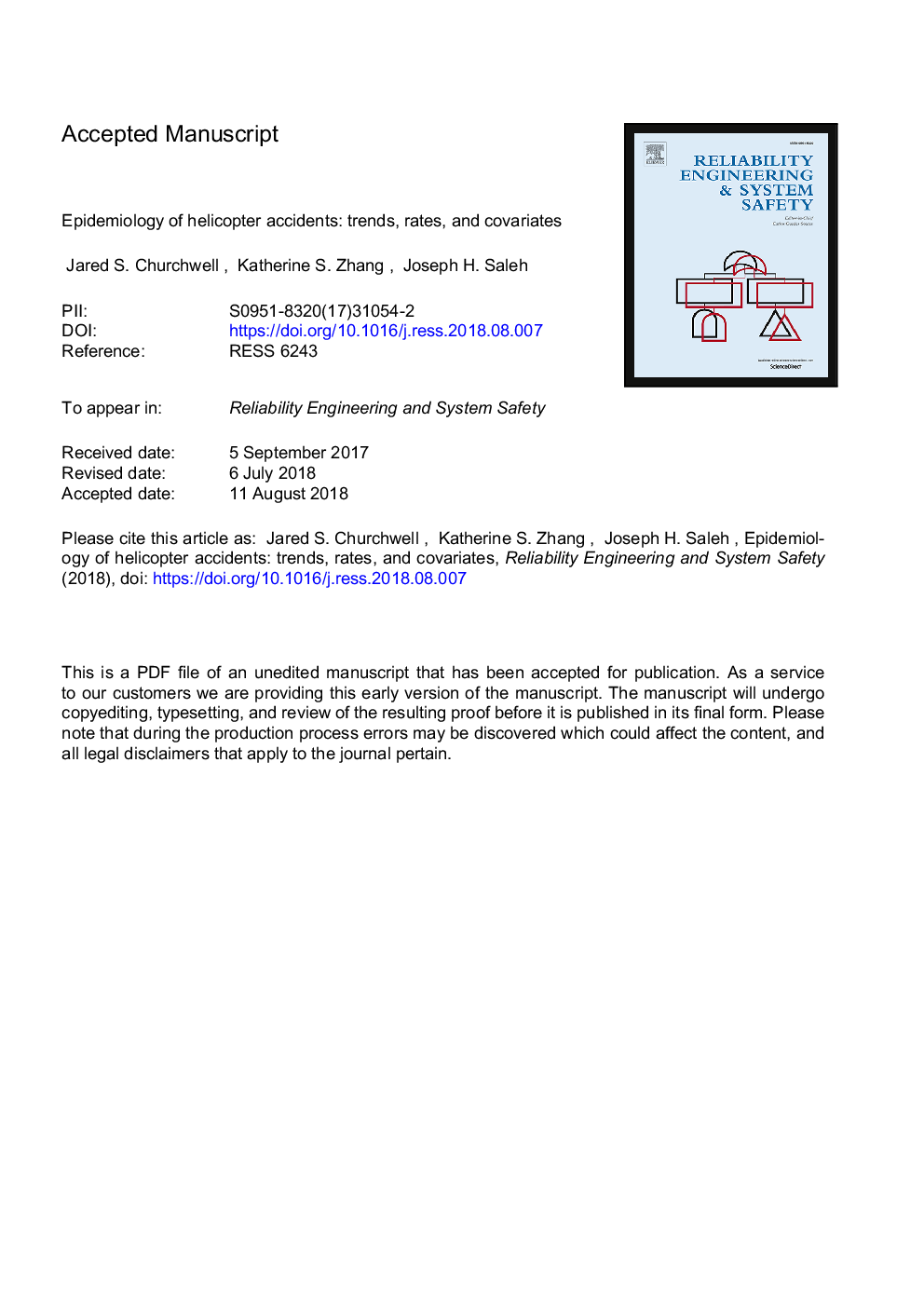| کد مقاله | کد نشریه | سال انتشار | مقاله انگلیسی | نسخه تمام متن |
|---|---|---|---|---|
| 11004077 | 1468191 | 2018 | 30 صفحه PDF | دانلود رایگان |
عنوان انگلیسی مقاله ISI
Epidemiology of helicopter accidents: Trends, rates, and covariates
ترجمه فارسی عنوان
اپیدمیولوژی حوادث هلیکوپتر: روند، نرخ و متغیرها
دانلود مقاله + سفارش ترجمه
دانلود مقاله ISI انگلیسی
رایگان برای ایرانیان
کلمات کلیدی
هلیکوپتر، تصادفات، ایمنی، تعداد تیغه ها، موتور،
موضوعات مرتبط
مهندسی و علوم پایه
سایر رشته های مهندسی
مهندسی مکانیک
چکیده انگلیسی
The objective of this work is to provide a better understanding of helicopter accidents and to identify important areas for different stakeholders to focus their attention and resources for accident prevention. To this end, we undertook Record Linkage of two federal data sources: the FAA civil helicopter registration data and the NTSB accident data. First, the analysis of accident rates and trends shows little progress in accident prevention over the last decade. Second, we find that helicopter accident rates vary significantly by number of main rotor blades, with the four- and six-bladed helicopters having the safest track record. Third, we show that accident rates vary by engine types when controlling for the number of blades. For example, the combination of reciprocating engine and three-bladed (3B) helicopters is associated with one of the highest accident rates. We further examine differences in accident rates between single and twin-engine helicopters, controlling for engine type and number of blades. The worst-in-class in terms of rates are the 5B and 6B single-engine turboshaft helicopters, whereas the worst-offenders in terms of contributing to the total count of accidents are the single-engine 2B reciprocating and turboshaft helicopters. The 4B single-engine turboshaft occupy a safety sweet spot and have the lowest accident rates of all single-engine helicopters. We provide risk ratios for pairwise comparisons and 95% confidence intervals for all accident rates, and discuss possible confounders for these results. The issues here examined lend themselves to a rich set of technical and operational implications, and they deserve careful attention from helicopter operators, regulators, and manufacturers. Any serious effort to improve helicopter safety will entail action on multiple safety levers, including design, operational, and policy-related ones. These actions should be evidence-based and they require better helicopter accident investigations and better data.
ناشر
Database: Elsevier - ScienceDirect (ساینس دایرکت)
Journal: Reliability Engineering & System Safety - Volume 180, December 2018, Pages 373-384
Journal: Reliability Engineering & System Safety - Volume 180, December 2018, Pages 373-384
نویسندگان
Jared S. Churchwell, Katherine S. Zhang, Joseph H. Saleh,
